Neem Article 1
Textile products are prone to host micro-organisms responsible for diseases, unpleasant odours, color degradation and deterioration of textiles. Antimicrobial textiles can be used to produce many goods such as sportswear, outdoor apparels, undergarments, shoes, furnishings, upholstery, hospital linens, wound care wraps, towels and wipes. Self-sterilizing fabrics could have potential benefits to reduce disease transfers among hospital populations, bio warfare protection and other applications. Infection control is the main concern in regards to the garments worn close to the skin.
Antimicrobial textiles with improved functionality got variety of applications in such garments. A range of textile products based on synthetic antimicrobial agents such as triclosan, metal and their salts, organometallics, phenols and quaternary ammonium compounds, have been developed and quite a few are also available commercially. With the increase in new antimicrobial fibre technologies and the growing awareness about cleaner surroundings and healthy lifestyle, the synthetic antimicrobial agents are a cause of great concern due to the associated side effects. Although they are very effective against a range of microbes and give a durable effect on textiles but the action on non-target microorganisms and water pollution are the minus points.
The use of Natural Antimicrobial agents for bioactive textiles is an emerging area of research. Eco-friendly antimicrobial agents based textile will reduce effectively the bad effects associated with the synthetic antimicrobial agents but also improve the environment. This type of cloths will be of great importance especially for the people suffering from skin problems.
Natural bioactive agents with antimicrobial properties have become increasingly important for biofunctionalisation of textile fibres because they enable the production of safe, non-toxic, skin and eco-friendly bioactive textile products. These antimicrobial compounds, which are mostly extracted from plants, includes Phenolics and polyphenols (simple phenol, Phenolic acids, quinines, flavinoid, Flavanols, tannins and coumarines), terpeniods, essential oils, alkaloids, lectins, polypeptides and polyacetylene.
There is a great demand for the fabrics having antimicrobial finishes to protect human being against microbes. These fabrics will be of great interest and importance. The application of antimicrobial textile include a wide range of textile products for medical, technical, industrial, home furnishing and apparel sectors.
A number of commercial antimicrobial agents have been introduced in the market. Recent developments on Chitosan (a naturally occurring biopolymer) have opened up new avenues in this area of research; it aims at developing an eco friendly natural antimicrobial finish from plant extracts for textile application. Some selective species of plants were identified and screened for their activity and the extracts were applied to cotton fabrics.
Leading newspaper The Indian Express published a report about a new approach to make antimicrobial textiles by incorporating the active principle of plant extracts with fabric. This work was carried out by Dr Thilagavathi and Mr. Rajendrakumar of the Department of Textile Technology, PSG College of Technology, Coimbatore and Mr. Rajendran of Department of Microbiology, PSG College of Arts and Science, Coimbatore. They explored the possibilities of using extracts of neem, prickly chaff flower and pomegranate on fabrics as antimicrobial agent.
An extensive study was conducted to assess the antimicrobial effectiveness of these herbs by employing standard test methods and the findings are discussed in this paper. Fresh leaves of neem and prickly chaff flower were shadow dried and made into a fine powder. In the similar way, the fine powder of pomegranate rind was obtained. Extracts of respective herbal powder were obtained by treating with methanol at room temperature resulting in active substance being dissolved in methanol.
Two test organisms namely; Staphylococcus aureus and Escherichia coli were used for the study. The activity of neem and pomegranate treated fabric samples against both the test organisms from the zone of inhibition, it is indicated that the antimicrobial activity of neem treated sample is stronger than pomegranate treated sample for both test cultures.
While testing the antimicrobial activity of Neem, Pomegranate, Achyranthus aspera as tested by Parallel Streak method for S.aureus, a complete plate clearance was observed for neem treated fabric samples. The zone of inhibition is moderate for pomegranate and mild for Achyranthus treated fabric samples.
In the case of the antimicrobial activity of Neem, Pomegranate and Achyranthus aspera as tested by Parallel Streak method for E-coli, the same trend is observed for neem treated fabric samples yielding a complete plate clearance whereas the activity is moderate for pomegranate and mild in the case of Achyranthus aspera. In the test against E-coli in AATCC bacteriostasis broth, the uninoculated control, inoculated control and inoculated finished samples were evaluated for percentage bacterial reduction by cell counting using templates. It was observed that neem has 100% bacterial reduction followed by pomegranate with 90% reduction and Achyranthus with 82% reduction. Tulsi (Ocimum sanctum), which showed no activity in the preliminary tests, exhibited a bacterial reduction of 73% in the challenge test. From the studies conducted, Neem exhibited maximum antimicrobial activity in all tests.
In an another study was conducted at Department of Textile Technology, Indian Institute of Technology, Delhi, on possible application of Neem extract on textiles as antibacterial finishing agent, revealed that Neem seed and bark extracts have a good potential to be used as an eco-friendly and effective agent for antibacterial finishing of cotton and cotton/polyester based textiles. It is found that the seed extract retains the antibacterial activity up to the five machine washes, which is equivalent to approximately 25 home launderings.
Nirmal Pal, who is a Textile Engg, and is Chief Executive Officer of NKP-Engineers & IPRs Consultants, Kolkata has developed NEEM MEDICATED TEXTILES. Best Neem leaves were collected from the eastern Indian tropical region. Solution was made by mixing raw turmeric in appropriate proportion to the neem leaf extract, and suitably filtered out to make a clear solution like vegetable dye-solution. Cotton Socks, Stockings, Panty, Bra, and other inner garments were sterilized in autoclave at 100 degree Celsius for 15 minutes and kept immersed in Neem – turmeric extract solution for certain period of time under pressure. Then cloths were dried. The same procedure was repeated for 3 times in warm condition for the proper penetrate of the neem particle. Fixing agent was used in order to withstand 10 washing at least in Luke warm water. The inner garments were used by normal people and patients’ with skin diseases. The products were sent in Europe to intimate friends who informed that they noticed positive effect of the garments on their skins. There were no spots and no mark due to non-availability of sunlight on their inner bodies.
They displayed their products and conducted awareness in the India International Trade Fair (IITF-2004 and in 2005) organized by ITPO, New Delhi .Many enquiries came from France, Brazil, Ivory Coast, China and African continents. They are doing further research work in the development of Neem coated Garment using Nano-Technology.
In a study done by E M El Khatib, N F Ali, R S R El-Mohamedy at National Research Centre, El Buhouth St., Dokki, Cairo, Egypt, on the influence of Neem Oil Pre-treatment on the Dyeing and Antimicrobial Properties of Wool and Silk Fibers with Some Natural Dyes. Wool and silk fibers were pre-treated with neem oil and dyed with chlorophyll, saffron red and yellow natural dyes using economic methods such as microwave heating and ultrasonic energy. They found that, wool and silk fibers pre-treated with neem oil recorded higher color strength values than the untreated fibers. Fastness properties and the color yield of the dyes under investigation on wool and silk fibers were evaluated. The results indicated that, color fastness to rubbing, washing and perspiration of all dyes was excellent to good. The antimicrobial activity against bacteria and fungi were tested, and the results indicated that the samples pre-treated exhibited higher inhibition percent than the untreated fibers. The morphologies structure of the untreated and treated wool fibers were examined by scanning electron microscopy (SEM). The untreated samples have a rough surface. The pre-treated samples of wool fibers were swelling compared to the untreated fibers .The diameter of the fibers increased and have smooth and even surfaces. The changes in the surface morphology due to the effect of active ingredients of treatment with neem oil. This behaviour as swelling and increase in diameter of the fibers leads to high penetration of the dyes in the fibers.
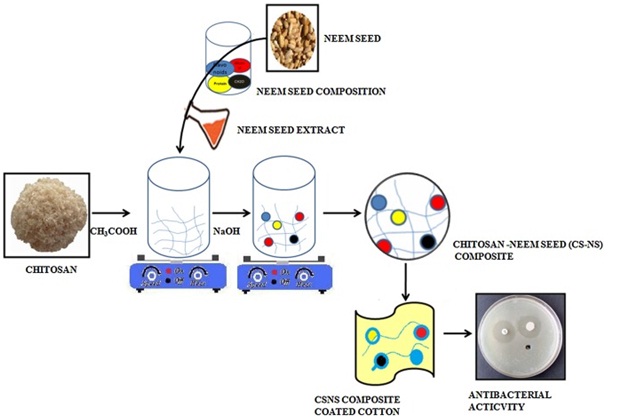
In present study, eco-friendly biosynthesis of Chitosan–Neem seed (CS-NS) composite was prepared by co-precipitation method using aqueous neem seed extract. Cotton fabrics were treated with two different cross linking agents (Glutaraldehyde and Citric acid) then the synthesized composite coated on cotton fabric by chemical linkage between the composite and the cellulose structure. As synthesized composite materials and treated cotton fabrics were characterized by Fourier transform infrared spectroscopy for functional groups confirmation, X-ray diffraction for crystalline behaviour determination, UV–viz spectroscopy analysis for optical property and High resolution scanning electron microscopy for Surface morphological properties. The antibacterial activity of CS-NS composite coated cotton fabric and CS-NS composite coated cotton fabric with cross linking agents were tested against the gram-positive and gram negative bacteria by agar well diffusion method. The results demonstrated that CS-NS composite with cross linked coated cotton fabric has higher antibacterial activity than without cross linked cotton fabric. Thus the Chitosan-neem seed composite may be applied to the medical textiles.
It's no surprise that designers are experimenting with sustainable fabric when it comes to innerwear. And it's not just any eco-friendly material. Lingerie fashioned from fabric soaked in turmeric, dipped in neem and infused with Indian madder (a flowering plant) is making its way from southern India's shores to boutiques in Britain and online stores in Australia and Japan.
Christine Snow, who lives in Bath, UK, supplies herb-infused undies to 20 outlets and three online stores. The beneficial properties of natural plant extracts are slowly released and absorbed into the skin when the cloth comes into contact through body heat, she claims. Indian madder has anti-inflammatory properties and is good for skin disorders, according to her. "The herb also gives the cloth its lovely pink hue," says Snow. "Neem is renowned for its antiseptic properties and gives relief from eczema and skin irritations," she adds. Snow sells Indian madder, neem, and turmeric knickers, at £10 each (Rs 820), on her website, www.keralacrafts.co.uk. Other products include herb-infused shawls and scarves.
The fabric is sourced from Balaramapuram, the garments are designed by Snow, and women of an NGO in Kerala make them. "There has been a good 'marriage' between traditional Indian craftsmanship using styles that are marketable in the UK," says Snow.
-
Oral health touches every aspect of our lives but is often taken for granted. Your mouth is a window into the health of your body. It can show signs of nutritional deficiencies or general infection. Systemic diseases, those that affect the entire body, may first become apparent because of mouth lesions or other oral problems. Whether you are 8 or 80, your oral health is important.
Oral health is essential to general health and quality of life. It is a state of being free from mouth and facial pain, oral and throat cancer, oral infection and sores, periodontal (gum) disease, tooth decay, tooth loss, and other diseases and disorders that limit an individual’s capacity in biting, chewing, smiling, speaking, and psychosocial wellbeing.
Worldwide, 60–90% of school children and nearly 100% of adults have dental cavities. Dental cavities can be prevented by maintaining a constant low level of fluoride in the oral cavity. Severe periodontal (gum) disease, which may result in tooth loss, is found in 15–20% of middle-aged (35-44 years) adults. Globally, about 30% of people aged 65–74 have no natural teeth. Oral disease in children and adults is higher among poor and disadvantaged population groups.
One of the greatest gifts of the Sages of Ancient India to mankind is Ayurveda. It is the oldest system of herbal medicine. Ayurvedic herbs have nature's power. The right herb in the right combination keeps the body system in harmony. Teeth are the important most organs of the human body. In the Ayurveda the use of tooth sticks (Meswak) of various plants to clean teeth, is considered very important to maintain dental hygiene. Cleaning teeth with tooth stick for a disease free cavity is not just a mechanical action but has great significance. The active medicinal phytochemicals like alkaloids, flavinoid, fixed oils, tannin etc, present in the chewing stick provide natural protection and helps to maintain the health of teeth and gums. Ayurvedic doctors & herbalists have developed unique Formulated Herbal Tooth Powders for effective and safe treatment of the number of dental diseases based on ancient system of traditional mixture of Ayurvedic herbs.
Neem twig is traditionally a preferred method for maintaining healthy teeth and gums. Neem is one of the most highly recommended plants in Ayurveda for oral hygiene. The neem tooth stick, a small stem piece with bark, shows antibacterial, antiseptic, analgesic, and anti-inflammatory activity. It contains phytochemicals like Nimbin, Nimbidin, Nimbosterol, Essential oils, Steroids, Coumarin, Hydrocarbons, Sulphur compounds, Phenolics, Flavinoid, Flavonoglycosides, Tannins and Margosin. These phytochemicals act on gingivitis, pyorrhoea and control bleeding and pain. They also effectively check the continuous process of deposition of plaque and gelatinous polysaccharides, sticky matrix substances.
The bark and the sap within the twig are known not only for their cleaning ability but also for protecting the mouth. Such is its prominence in Indian society, that many researchers believe that these Neem twigs have helped rural Indians avoid cavities, despite limited access to modern dental care.
Neem has a unique three-in-one therapeutic effect with three tastes, which are astringent, pungent and bitter. The astringent taste strengthens the loose teeth and gums. It also reduces excess salivation, heals the ulcer and removes sticky materials present in the oral cavities. The astringent taste of neem is due to its tannin contents. The pungent taste stimulates the taste buds to accept the different tastes of the food. It eradicates toxins deposited in the tartar. The bitter taste increases appetite. It cleans the tartar, improves the voice, reduces excess salivation, and eradicates pus and toxins deposited on the surface of the enamel.
The bitter and astringent tastes of neem balance the alkaline pH of the buccal cavity to protect the enamel from acidic pH attacking the outer calcified layer. The neem remains active and effective for a quite a few hours maintaining the alkaline pH and protecting the enamel from carcinogenic bacteria’s like streptococci and lacto bacilli. Using a Neem tooth stick for oral hygiene provides additional benefit of protection of different digestive organs like liver, stomach etc.
Effect of chewing sticks of neem on dental health has been attributed to presence of fluorides. In one of the studies it was reported that 20% w/v aqueous extracts of a neem chewing-stick yielded 2.8 ppm fluoride. Presence of fluoride has been reported to prevent accumulation of bacteria on teeth. Neem in “in vitro” studies has also shown inhibition of Staphylococcus aureus, Streptococcus pyogenes and anaerobes. These "in vitro" studies support the anti plaque potentiality of neem.
The fresh tooth stick, a soft straight branch of neem tree about 15 cms long and as thick as the little finger provides freshness not only to teeth and gums but also helps to maintain the homeostasis for the entire body system. Even one can use leaf stalk (defoliated thin stick). Just chewing the whole stalk will also serve the purpose. For those not inclined to chew neem twigs (tooth sticks), toothpaste and mouthwash containing neem are now available. Neem has been used as a component of toothpastes, mouthwashes, food compositions, for gingivitis and reducing caries as well as for the treatment of inflammation of the mouth. As a natural flavouring agent it is used in oral compositions for treating plaque and gingivitis. It has also been used as a component of chewing gum containing a teeth whitening agent.
Brushing with Neem toothpaste after every meal and using a mouthwash with Neem extract is recommended treatment for preventing gingivitis. In a study, Neem-based mouth rinse was given to patients for assessing anti-plaque and anti- gingivitis activity. The findings conclude that Neem mouth rinse is as effective as chlorhexidine in reducing periodontal indices.
Some important studies reports:
Ahmad, et al. used micro-sized particles or micro fibers of branches or roots of Azadirachta commonly known in different parts of the world as the peelu, Meswak tree. They used these particles in place of commonly used mineral abrasives.
Schaller in his patent (U.S. Pat. No. 4,223,003) used neem oil as one of the optional components of their paste and powder dentifrices.
Miller S. E. and Simone A. J. reported formulation of chewing sticks made from natural fibers. They suggested use of neem oil but no claim to its properties was made. Also no description of extraction of oil or plant parts used was given.
Nabi et al reported a formulation comprising thymol and Eugenol, and optionally a sesquiterpene alcohol. They claimed the formulation to have plaque and gingivitis effects. They suggested use of neem oil to provide an organoleptically acceptable oral product.
Seabrook, Jr. et al. suggested use of neem seed, leaf, bark extracts and oil in their formulations of polymers containing antimicrobial agents. They suggested that the antimicrobial agents include phytochemicals and phyto-nutrients such as naturally occurring extracts from plants and herbs and other chemical disinfectants.
Some of the more recent work has focused on oral care. Extracts from neem sticks or bark have been shown to inhibit the growth of streptococcus mutans bacteria. A study at the University of California by Wolinsky LE, Mania S, Nachnani S, Ling S. indicates that neem stick extract showed significant reductions in bacterial adhesion in vitro, suggesting that it can reduce the ability of some streptococci to colonize at the tooth surfaces.
A study was done at Dept. of Pedodontics & Preventive Dentistry, College of Dental Surgery, Manipal, India by Vanka A, Tandon S, Rao SR, Udupa N, Ram Kumar P., to find the antibacterial effect of Neem mouthwash against salivary levels of streptococcus mutans bacteria and lactobacillus. The study has been conducted over a period of 2 months. Also its effect in reversing incipient carious lesions was assessed. Streptococcus mutans bacteria were inhibited by Neem mouthwashes, with or without alcohol as well as chlorhexidine, lactobacillus growth was inhibited by chlorhexidine alone. The initial data appears to prove its effect in inhibiting S. mutans and reversing incipient carious lesions.
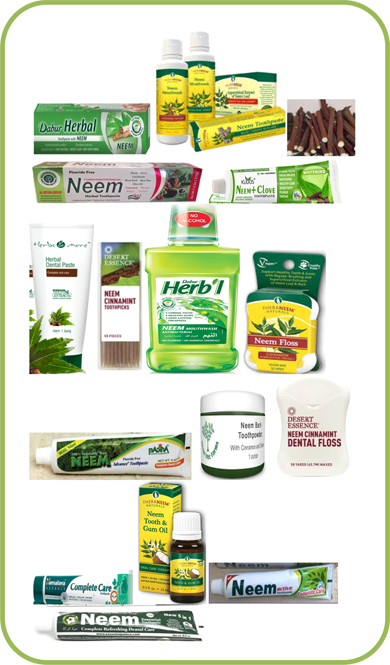
- By Dr. Anand Titus and Geeta N. Pereira of ECOFRIENDLY COFFEE
Shade grown coffee plantations are one of India's best kept secrets. These coffee farms are located in tropical belts, where the sun shines strongly, warming the coffee mountain. As such, the coffee farms receive abundant sunlight. The photosynthetic machinery of the three tiered tree canopy makes maximum use of solar radiation with the help of chlorophyll in synthesizing carbohydrates and sugars.
Due to the interplay of various biotic partners inside the coffee forest the biomass production at any given time is relatively high. It is an established fact that organic wastes are building up rapidly in every acre of coffee because of the multi diversity of trees, herbs and shrubs. However, coffee farmers are not in a position to harvest the locked up energy in these substrates. It is not clear just how much of these wastes are now converted into organic fertilizers, or are likely to be converted in the future. Coffee farmers need to be aware that the limitation to the increased productivity of coffee is not the soil nutrients, but the rate of recycling of biomass within the confines of the coffee mountain.
The strength of this article is based on three core ideas.
Field application of neem in different forms acts as a precursor for the stimulation of beneficial micro flora, there by releasing the locked up energy in the accumulated biomass, converting them into energy rich compounds. The key idea rests in the fact that this energy is not only useful for the growth, development and productivity of coffee but serves as a common denominator in nourishing the biotic components of the entire coffee mountain.
Neem and its derivatives act as PROPHYLATIC [Preventive treatment] agents in the control of pest and disease incidence.
The addition of neem conserves parasites and predators of insect pests. Infect, the neem environment shapes the predator prey relationship inside the coffee mountain.
Neem (Azadirachta indica) also known as Melia azadirachta belongs to the family, Meliaceae and is a native of the Indian subcontinent. The agricultural and medicinal importance of this multipurpose tree was known to Indians since centuries. The use of neem in coffee Plantations is not something new. For ages, Coffee farmers have taken advantage of Neem as a soil amendment and insect repellent without understanding its true nature. It is only off late with the latest advancement in science and technology that the various components of neem and its active ingredients have been isolated , thereby enabling the coffee farmers in appreciating the role of neem in regulating the living processes inside the coffee habitat. Today, scientists are of the opinion that every part of the tree has a well defined use.
The coffee farmer has two advantages with respect to neem, namely availability of large quantities at a reasonable cost and secondly, since neem is available in areas surrounding plantation districts, the transportation cost is minimized.
FUTURE TRENDS OF NEEM & ITS BY-PRODUCTS
Regulates nitrogen release from nitrogenous fertilizers.
Bio activity against plant pathogens and pests.
Soil conditioner
Lowers the C: N ratio of soil organic matter.
Enhances the spread and multiplication of beneficial micro flora.
Soil conservation
Excellent source of organic nitrogen.
Exerts behavioural, Physiological and biochemical effects on insects.
Excellent soil amendment.
Non development of resistance of microorganisms towards neem based products.
Harmless nature; against non target organisms.
Lack of any residue problem.
Acts as an excellent input in the use of Integrated Pest Management.
Excellent air purifier as well as wind breaks.
Increases soil fertility and soil water holding capacity.
Neem can balance acidic soils of calcium mines and neutralize them.
Wood is excellent in manufacturing agricultural implements.
Useful tree in rehabilitating waste land areas.
Very effective against global warming.
Toxicants produced during microbial degradation of neem inhibit several stages of pest population.
POLICY MATTER
Right from patents, commercialization of neem has flooded the market with thousands of formulations and an even greater number of products. A detailed data base of the various products and the concentration of active ingredients need to be established before field application of neem is carried out.
The various parts of the neem tree, including the seed are bitter and some parts have a sharp pungent taste. The tree as such is a treasure house of different biologically active compounds which are chemically diverse and structurally stable and complex. The active ingredient Azadirachtin is active against a whole range of harmful insect populations.
Coffee farmers are under a spell to grow exotic trees like mangium, mesopsis, etc, which mine the precious nutrients from the coffee mountain. Instead, they could grow neem in either paddy fields adjoining the coffee belts or grow it along the bio-fence. Neem is known to have a wide adaptation and tolerance to varied soil and climatic conditions. It does not demand rich soils for its growth and development. It grows successfully on dry stony, clayey soils and can thrive well in leached sandy soils.
CONSTITUENTS OF NEEM FRUIT
Neem fruit is a berry which is green when unripe. As ripening progresses the color of the outer skin; pericarp changes from green to yellow. On maturity the fruit is very fleshy and fresh fruit has 40 to 50 % moisture. 40 kilograms of fresh fruit yields 24 kilograms of dry fruit, yielding in turn 11.52 kg pulp, 1.10 kg seed coat, 4.0 kg husk and 5.48 kg kernels. The kernels are the richest source of oil as well as oleo chemicals. Oil and cake constitute nearly 45 and 55 % respectively of neem seed kernels.
ACTION OF NEEM AGAINST PEST & DISEASE INCIDENCE
Research data suggests that more than 300 species of insects can be controlled with the help of neem products. In addition neem has promising nematicidal and fungi toxic activity. In India, neem has been evaluated against 125 species of pests of agricultural importance. All parts of the tree are known to be biologically active. The maximum insecticidal activity is in seed kernel. Scientific review of papers shows that neem also possesses insect growth regulatory effect.
Strong> AGRICULTURAL FORMULATIONS
Neem is known to contain over 100 biologically active constituents that can be used in various agricultural formulations like Insecticides, Fungicides, Bactericides, Nematicide, and Antiviral compounds.
According to B. N. Vyas and K.B. Mistry, there is considerable emphasis placed on the development of neem pesticides based on AZADIRACHTIN, which is the most widely evaluated neem compound. However, they are of the opinion that, it may not be advisable to develop a product based on pure Azadirachtin alone because of the following reasons.
At least 50 neem compounds are reported in literature to possess antifeedant / repellent and / or insect growth regulating activities.
There is always a danger of development of resistance in insects against a product containing a single active molecule.
There is hardly any evidence of the antagonistic effects of one neem compound on the other. Literature survey reveals that under many situations, crude or semi purified extracts of seeds give similar results as compared to pure Azadirachtin and in fact, in many situations, crude extracts perform better than Azadirachtin alone based preparations.
Greater technical skills are required to produce very high concentrations of Azadirachtin in technical grade material which also leads to market escalation cost.
JOE'S SUSTAINABLE FARM: KIREHULLY ESTATE
It has been an age old tradition to use various neem products on this farm for the past four decades. Neem has been a central organic amendment in our farm. Oiled as well as deoiled neem cake has been mixed with compost and synthetic urea and the same applied to the farm. However for the past three years we have been procuring fresh neem seeds directly from the farmers and broadcasting the same to the field. The idea behind this change is to stabilize the carbon: nitrogen ratio such that the microbial activity increases and provides for better utilization of organic wastes. The application of neem stimulates soil micro flora. The dense mulch and organic matter on the floor bed of the plantation together with neem increases heterotrophic microbial activity and organic matter decomposition.
VARIOUS NEEM COMBINATIONS
FRESH NEEM SEEDS directly broadcasted to the coffee farm
Drying neem seeds for a period of 15 days and then broadcasting.
Coarse Powdering of neem seeds with the help of a roller and then broad casting the same.
Partial Composting of neem seeds with sheep, and poultry litter separately and together for a period of three months (above ground method) together with parchment husk and broadcasting the same to the farm.
Composting neem seeds with other organic manures by the PIT method (Refer Fine art of composting) for a period of one year and then broadcasting the same.
Applying commercially available neem cake (oiled and deoiled)
Mixing neem seeds with urea, rock phosphate and potash and broad casting the same in the month of September.
[P.N. Points 1 to 7: After broadcasting neem, scuffle digging or deep digging was undertaken, to accelerate the rate of organic matter decomposition]
LOW COST TECHNOLOGY FOR RAPID MULTIPLICATION OF INDIGENOUS MICROFLORA
In order to multiply the native micro flora, the following experiment was carried out. For every barrel (180 litters) of water, 10 kilograms of fresh cattle dung was added and the same was allowed to ferment for just one week with constant rotation to facilitate aeration. Also, fresh soil from fertile (trenches) blocks was kept in a shaded place under moist conditions. At weekly intervals, the mixture in the barrel was sprinkled over the neem seeds together with a thin layer of moist soil. The entire heap of neem was manually turned upside down and accordingly broad casted to the coffee farm.
THE FARM AS A COMPOST BIN: CONCEPT OF EXTENDED COMPOST UNIT
A new experiment is unfolding at Joe's Sustainable farm. Instead of having location specific compost pits we are experimenting in considering the entire farm as a single extended compost unit. To begin with we have considered 25 acres as one working unit. In time this concept will be extended to the entire farm. Our hypothesis is based on five key ideas. Symbiosis among various biotic partners.
Ready availability of tons of biomass produced periodically due to leaf shedding from forest trees as well as from coffee bush, herbs & shrubs.
Presence of associative and free-living micro flora responsible for nitrogen Fixation, phosphorus solubilisation and other organic conversions.
Presence of succulent weeds (three round of weeding operations are carried out in shade grown Indian coffee farms)
Shade lopping every two to three years produces woody biomass which is removed from the farm as fuel. Converting woody material into energy rich Compounds are our area of concern.
MODIFICATION OF SOIL MICROFLORA BY ADDITION OF NEEM
Since Indian Coffee Plantations are greatly influenced by the FOREST FACTOR, there is a tremendous amount of well scattered biomass which needs to be recycled for the periodic release of nutrients. The unfortunate part is the non availability of a large number of beneficial strains of soil microbes to act on this raw material. Our idea is to create a suitable environment for the accelerated growth and multiplication of different strains of indigenous beneficial microbes which are already present on the farm by the application of neem in different forms. Our experiments prove beyond doubt that it is possible under field conditions to stimulate the micro flora composition by adding neem. Our past experience has pointed out very clearly that the micro flora within the coffee mountain is in equilibrium with the environment and that introduced microorganisms must compete with indigenous micro flora. Hence, our idea of providing a niche for the native soil flora by the addition of neem was to enable them to multiply without stress.
NEEM AND THE VALUE OF WEEDS
A healthy soil consists of diverse species of weeds, both monocots and dicots. Indian coffee farms mimic nature and as a result during the monsoon, the farms are covered with an amazingly diverse species of weeds. Our objective is to help coffee farmers realize the value of weeds as an excellent base for the build up of both beneficial microbes and native flora. We manually trim the weeds by the slash method and then broadcast the same, followed by neem application. Our observations point out that this practice increases the macro and micro flora resulting in the availability of mineral nutrients to the soil in a gradual and continuous manner. The most important observation is that the weeds and neem combine together in a symbiotic relationship, changing the soil, leading to the natural progression of different kinds of weeds that are succulent in nature.
POSITIVE TRENDS OBSERVRED DUE TO REPEATED NEEM APPLICATION
Improves health and vigour of the plant.
Improves soil fertility, soil texture and porosity.
Improves soil aeration, resulting in well established net work of roots.
Improves the nutrient retaining properties of the soil.
Availability of nutrients in the soluble form coinciding with the growth and development stages of the plant.
Soil micro flora is enriched.
Improved drought tolerance by build up of stable humus, improvement of soil structure and water.
The leaf appears dark green and promotes increased photosynthetic activity. Leaf has a thick cuticle which acts as a barrier in preventing insect and microbial attack. The plantation is by and large resistant to attack by insects and microbial pathogens. The size of the coffee beans is uniform and also bigger in size compared to blocks without neem application.
During monsoons season, if there is no break in rain spells then application of neem controls berry drop.
During long periods of drought, the soil treated with neem acts as a defence mechanism to protect the overall integrity of the farm.
Increases the percentage of uniform ripening of beans.
Increases the percentage of flower setting.
Increases the dry matter content of coffee.
Increases honey bee population during flowering.
RECOMMENDATIONS FOR RESEARCH
Application of various forms of neem has been a regular practice at Joe's Sustainable farm for many decades. Our remaining task is twofold. To evaluate the past work and to indicate what the future requires. In the search for methods to enhance neem application, only practices and schemes that have a chance of adoption by a large number of coffee farmers should be seriously considered. Most importantly, the practice of applying neem should fit into the coffee farmer's package of practice.
CONCLUSION
In the 21st century the world is considered a global village. However, as the world is shrinking, agriculturists in the developing world are fighting many loosing battles because of the onslaught of multinationals. Every seed or the bio components there in are patented and farmers need to pay a hefty price just to buy them. It's a small world with big battles. John Vidal reports in the GUARDIAN that Global food companies are aggravating poverty in developing countries by dominating markets, buying up seed firms and forcing down prices for staple goods including tea, coffee, milk, bananas and wheat. Just 30 companies now account for a third of the world's processed food; five companies control 75 % of the international grain trade; and six companies manage 75 % of the global pesticide market. Two companies dominate sales of half the world bananas, three trade ; 85 % of the world's tea, and one, Wal-mart, now controls 40 % of Mexico's retail food sector. Monsanto controls 91 % of the global GM seed market. In short, the report highlights how power in the world agriculture and food industry has become concentrated in a few hands. John Samuel of Action Aid says that it is a dangerous situation when so few companies control so many lives.
Earlier, the story was different. Nature's wisdom book was open for all of humanity. Coffee farmers were a satisfied lot. They used to try out traditional methods and by word of mouth communicate the success of their ingenious experiments. There were no secrets to hide. It took years of patient work to understand the coffee habitat and its needs. Infect, the Indian coffee habitat is a living laboratory which provides a great opportunity to study nature's patterns. With the advent of commercialization, farmers have to pay a hefty price to acquire basic knowledge.
Due to the global dip in coffee prices, the relationship between the coffee farmer and the coffee habitat too is under stress. In the coming years, due to high pest and disease incidence, we won't be too surprised to see Arabica farms being wiped out from the map of India. Scientists and coffee farmers have no clue as to what needs to be done to resurrect Arabica farms!
Worldwide, coffee farmers need to think logically towards the balanced exploitation of the coffee mountain resources in accordance with the requirements of the coffee habitat and the biotic partners associated with it. We also need to carefully examine the requirements of the plant environment, internal and external, natural and artificial, short term and long term in achieving a sustainable balance. Technology should aim at strengthening sustainability by building the natural resource base. NEEM and its useful role in coffee farms will definitely help to answer the difficult questions of tomorrow.
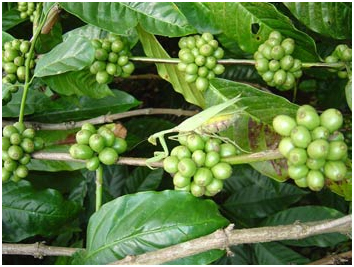
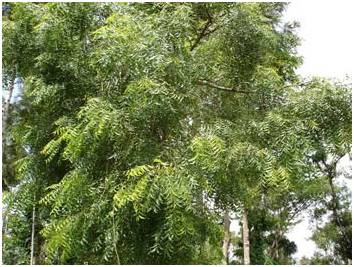
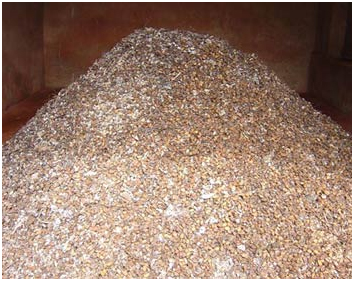
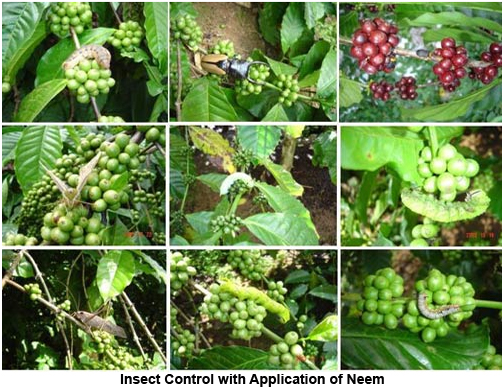
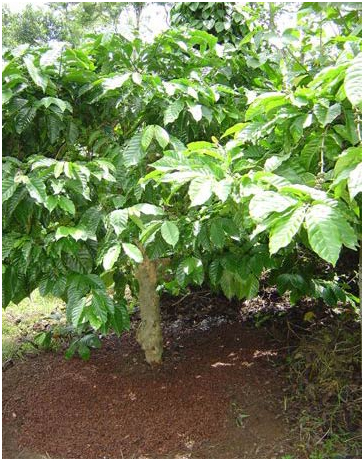
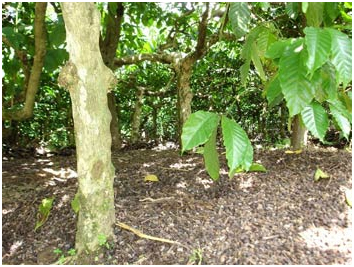
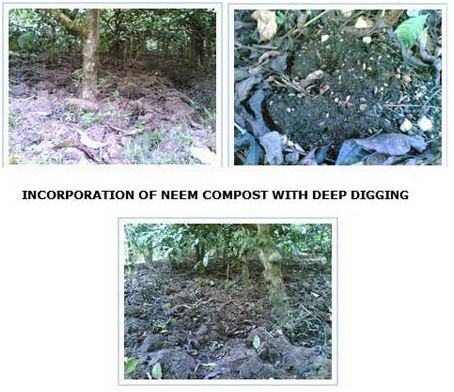
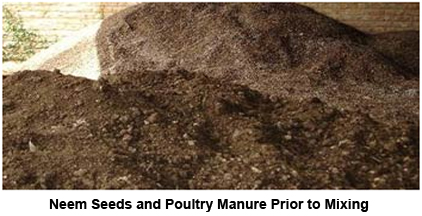
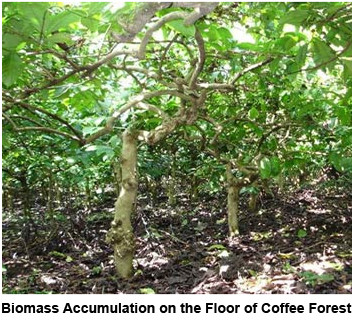
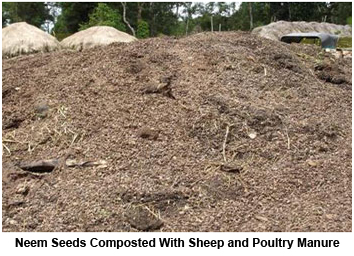
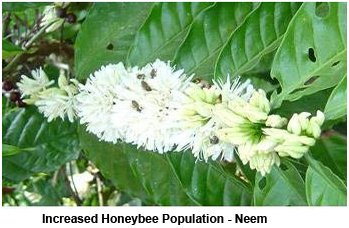
REFERENCES:
Invisible Communications in Coffee Plantations
Endomycorrhizae
Organic Matter Decomposition in Coffee Plantations
The Fine Art of Composting In Coffee Plantations
Farm Coffee Organic Manures
Global Warming in Coffee Plantations
Biodiversity In Relation To Coffee Plantations
Coffee Forest Symbiosis
Significance of Microbial Interactions within Coffee Plantations
Role of Bacteria in Coffee Plantation Ecology
Role of Fungi in Coffee Plantation Ecology
The Role of Actinomycetes in Coffee Plantation Ecology
Microbial Communities
Role of Ectomycorrhizae in Coffee Plantations
Coffee Plantations A Multidisciplinary Approach
The Ecodynamic Coffee Cube 3
Arora R. & G.S. Dhaliwal 1994. Botanical pesticides in insect management; Ecological perspectives. In: Management of agricultural pollution in India. (Eds. G.S.Dhailiwal 7 B.D.Kansal). Commonwealth Publishers. New Delhi.
Battu G.S. Dhaliwal G.S. and A.K.Raheja 1994 Biotechnology; Perspectives in insect pest management. In: Trends in agricultural insect pest management. (Eds. G.S. Dhaliwal and Ramesh Arora). Commonwealth Publishers, New Delhi.
Benge M.D. 1988. In: Focus on photochemical pesticides. Vol-1. The Neem Tree. (Ed. Martin Jacobson) CRC Press Inc., Boca Raton, Florida.
Chiu, S.F. (1984), Proc. II Int. Neem Conf. FRG.
Coffee Guide 2000 Central Coffee Research Institute, Coffee Research Station. Chikmagalur District Karnataka India.
Claude Alvares 1999. The Organic Farming Source Book. The Other India Press, Mapusa 403 507 Goa, India.
Hegde N. G. 1992. Neem: Silviculture and production. Neem Newsletter 9: 1-4.
IARI 1993 Neem in agriculture. Eds B.S. Parmar & R.P. Singh. Res.Bull No.40. Indian Agriculture Research Institute. New Delhi.
Jacobson M. (1986) 3rd Intern. Work, Conf. Stored Prod. Entomol, Kansas.
Jacobson, M. (Ed) 1988. Focus on photochemical pesticides. Volume-1. The Neem Tree. CRC Press, Inc. Boca Raton, Florida. U.S.A.
Karim A. (1980) Proc. 1st Inter, Neem Conf. Rottach - Egern. FRG: 223 - 250.
Kraus. W. 1991. Constituents of neem and other Meliaceae Species in pest control. Symp. Resources for Sustainable Agriculture: The use of neem and other plant materials for pest control and rural development. East - West centre. Honolulu, Hawaii 96848. U.S.A. Neem Newsletter 8 (3-4): 25.
Lewis W. H. and Elvin - Lewis, M.P.E. (1983) Eco. Bol. Vol. 37 (1): 69 -70 Locke J.C. & R.H. Lawson.1990 Neem's potential in pest management programs
Proceedings of the USDA Neem workshop, Beltsville, Maryland.
Meisner I; Kehi, M; Zur M. and Eizick (1978) Phytoparositica vol. 6:85-88.
National Research Council 1992. Neem: A tree for solving global problems. National Academy Press. Washington. D.C., U.S.A.
Randhwa N.S. and B.S. Parmar (Eds) 1993 NEEM Society of Pesticide Science, India New Age International (P) Limited, Publishers. New Delhi.
Randhwa N.S. and B.S. Parmar (Eds) 2000. Neem research and development. SPS Publication No. 3. Society of Pesticide Science, India.
Schmutterer H. (1984) Mitteil, ungin aus der Sio, sound. Fur and forst Berlin- Dahlem: 233-333.
Tewari D. N. 1992. Monograph on neem (Azadirachta indica A.Juss). International Book Distributors, Dehra Dun, India.
Vyas B. N. and K.B. Mistry. 2000. Processing and Standardization. In NEEM Edited by. N.S. Randhwa and B.S. Parmar. Society of Pesticide Science, India. New Age International (P) Limited, Publishers. New Delhi.
-
Skin is our largest and amazing organ that protects us from all external extremes. It is a reflection of our good health. If you want your skin to remain healthy then your skin needs care from the inside as well as from the outside. The entire cosmetic industry is built upon the desire to improve the condition and appearance of the skin. You buy the products to tackle the problems of your skin and for that sometimes you even resort to strong chemicals and dangerous medications.
We are very fortunate that God has blessed us with Neem. It works wonderfully for all skin related problems. Neem has been used for centuries to treat all conditions and diseases of the skin. According to the Ayurveda principles imbalanced Kapha and Pitta doshas cause skin diseases. Neem pacifies balances Kapha and Pitta doshas, thus helps to cure skin diseases. Neem has an affinity for both the liver and the blood, making it a great option for skin disorders, especially with a Pitta involvement (i.e. rash, irritation, redness, acne, eczema, psoriasis). It works on almost on every kind of skin disease. The rediscovery of natural products like neem that have long traditions of safety and efficacy offer the opportunity to get back to the basics of healthy and beautiful skin.
Dr. H.S. Puri, a leading clinical research scientist in India made the statement that” by incorporating neem oil in the skin care creams psoriasis, eczema, acne, dermatitis and other skin problems can be controlled much better than any other known product". .
Clinically Neem is proven to reduce the pain, kills bacteria that can cause infections, stimulates the local immune system and promotes rapid healing with reduced scarring, to be an effective analgesic and anti-inflammatory, and relieves both pain as well as inflammation. These properties along with the other properties that makes Neem so effective against serious skin diseases like eczema, psoriasis, acne, dermatitis, Shingles, jock itch, athlete’s foot, ringworm, scabies, lice, and Candida. Dry Skin, Wrinkles, Dandruff, Itchy Scalp, Skin Ulcers and Warts are other skin diseases that can be effectively taken care by using Neem.
External application of lotions, soaps and creams containing Neem oil and Neem leaf extracts are very effective. Paste of the leaves, applied externally is very useful. They can be used either as a poultice, or liniment. An ointment prepared from neem leaves is also very effective. Clinical studies with the dried neem leaf extract indicated its effectiveness to cure any skin diseases. Lotion derived from neem leaf, when applied locally, can cure dermatological diseases within 3–4 days in acute stage or in 15 days in chronic case. Intake of Neem leaf extract, capsules, and teas are very useful because they detoxify the blood of impurities that are the main cause of most of the skin problems.
Psoriasis is a persistent chronic skin disease that got its name from the Greek word for "itch." The skin becomes inflamed, producing red, thickened areas with silvery scales; most often on the scalp, elbows, knees, and lower back. In some cases, psoriasis is so mild that people don't know they have it. At the opposite extreme, severe psoriasis may cover large areas of the body. Although the exact cause is unknown, according to the recent research it’s an autoimmune disease. Psoriasis is believed to be related to faulty signals sent by the body's immune system. These signals accelerate the growth cycle in skin cells, which pile up on the surface when the body can't shed them fast enough. Psoriasis is not contagious— no one can "catch" it from another person. It has a genetic component that makes certain people more likely to develop it, but often an external or environmental "trigger" is necessary to make psoriasis appear. These triggers may include emotional stress, injury to the skin, some types of infection and reaction to certain drugs..
The conventional treatment for psoriasis involves creams containing cortisone-like compounds, synthetic vitamin D, tars, and anthralin. Side effects of Creams containing cortisone include thinning of the skin, dilated blood vessels, bruising, and skin color changes. Stopping these medications suddenly may result in a flare-up of the disease. After many months of treatment, the psoriasis may become resistant to the steroid preparations.
Neem oil and leaf extracts can be the wonder cure and probably the best currently available for treating psoriasis. It moisturizes and protects the skin and helps to heal the lesions, scaling and irritation. Experiments and reports from patients with psoriasis have shown taking neem leaf orally combined with topical treatment with neem extracts and neem oil appear to be as effective as conventional treatments may be more.
In a case study a patient with severe psoriasis was given neem extract (Nimbidin) three times a day and the skin was treated with Nimbidin mixed in coconut oil. The treatments lasted for less than three months. The itching was stopped, redness was reduced and the condition of the skin continued to improve in the duration of treatment. The final result of the treatments was the complete disappearance of the signs of psoriasis. They produced no noticeable side effects. Anecdotal reports indicate that improvements are faster when the areas treated with neem are also exposed to sunlight.
Neem can also be used for extended periods of time without side effects. Neem can also take the place of oral medications and injections that may have strong side effects or cause liver damage or birth defects. It is perhaps the best and safest alternative for treating psoriasis. The use of neem soap and shampoo (scalp psoriasis) also is recommended.
Scaring, weeping, scabbing, thickening of the skin surface, and scratch marks characterize "Eczema" or dermatitis is the name given to an inflammatory process of the skin. Itching, scaling, blistering, weeping, scabbing, thickening of the skin surface, and scratch marks characterizes Eczema which is an allergic condition that affects the skin. It is a syndrome of inflammatory skin reaction. The appearance of eczema varies depending upon the type of eczema and the part of the body affected. Eczema can occur in any age group from infants to elderly persons. Neem is one of the best treatments for eczema (dermatitis) same as for psoriasis. Neem’s multiple actions seem to clear up eczema more effectively than any prescription drugs mostly steroids. Generally neem is tried as a last resort. To relieve the intense itching and reddening of eczema, neem soap or a shampoo, and for general therapeutic use addition of neem leaf or extracts to bath water is recommended. In chronic cases neem leaf tea or neem leaf capsules twice a day is the best till symptoms disappear totally.
Date: Sun, 18 Mar 2001 21:07:09 EST
From: Olatou@aol.com , Susan in Cambridge
Subject: Re: eczema story Well, it is about success with eczema.
I sell soap, etc. at a local Farmer's Market in my area. Last year I did a cucumber infused soap that sold so well, I made more. In an effort to get a natural green color for the cucumber soap, I made a decoction of neem powder for a portion of the lye water. Naturally this was neem leaf powder, and I watched in horror as my wonderful cucumber soap turned chocolate pudding brown (complete with brown suds).
Undaunted, I printed out some educational material on neem and sold it as rather than cucumber. A brown haired, half hysterical woman came back two weeks, claiming I had preformed a miracle. She asked me to look at her hands. I was puzzled, but evidently they had been freed from eczema. She walked off with a box of soap, leaving me four. The Goat cheese lady got curious, and asked me about it. She was also up a tree with eczema and the cortisone shots weren't working. She bought a bar of the and within two weeks HER eczema had cleared up. Now I'm using, as people have been asking me if I had it in another color (other than chocolate pudding brown) - and am working on a lotion (but it won't have neem in it, unless it’s) Neem has a horrible smell EXCEPT in a dried soap, then it has no smell. The oil comes out a honey color (nice with some ground calendula). Leafy things, of course turn brown in soap. I don't know what to say about your story. But if you find something that works for you, continue on with it.
Scabies is a contagious disease of the skin caused by very small, insects called the Human Itch mite or Scabies itch mite. A very small, hard to see, zigzag blister usually marks the trail of the insect, and more obvious symptoms are an intense itching (especially at night) and a red rash that can occur at the area that has been scratched. The most common locations for scabies are on the sides of fingers, between the fingers, on the backs of the hands, on the wrists, heels, elbows, armpits, inner thighs and around the waist (belt line). One of the great problems with scabies always has been misdiagnosis.
Scabies is spread by personal contact, e.g., by shaking hands or sleeping together or by close contact with infected articles such as clothing, bedding or towels. It is usually found where people are crowded together or have frequent contact, and is most common among school children, families, roommates, and sexual partners. Scabies can be spread by the insect itself or by the egg. A prompt action is required to rid of the insects and eggs
As neem affects head lice same way it affects itch mites too. Since scabies usually affect large areas of the skin, soaking in warm bath water with neem leaf tincture or a strong neem tea for fifteen minutes works wonderfully. To get rid of itch mites totally after soaking washing thoroughly with neem soap is must. After the bath, a neem based cream or lotion should be applied. This relieves itching immediately and the scabies can be eliminated in a few days time. As the mites can infect bedding and clothes, all contaminated clothing should be washed with neem soap in hot neem leaf water.
One of the studies done on around 900 people found paste prepared with neem leaf and turmeric was very effective in the treatment of scabies in nearly 814 people. In 97% of cases, the paste was found to cure scabies within 3–15 days of treatment without any adverse effect.
Acne is one of the commonest skin problems. Usually, natural oil called sebum stops your skin from drying out. Sometimes, glands in your skin produce too much sebum. Acne starts to develop when hair follicles in your skin get blocked with sebum and dead skin cells. This can lead to dark spots, called ‘blackheads’, becoming noticeable on your skin. If your follicles stay blocked, they can become inflamed (swollen). This can lead to spots that look like bumps (papules), are white in color (pustules) or spots that contain fluid (cysts). Sometimes, a bacterium called Propionibacterium acnes (P. acnes) that usually lives harmlessly on your skin, can grow inside your follicles. It can contribute to inflammation (swelling) in spots.
Conventional medicine that is given to improve Acne condition may have side effects on us. Neem kills the bacteria that cause acne, spots and pimples and reduces redness and inflammation. Neem oil has moisturizing properties because it contains high fatty acids which are great at reducing acne scars. Washing with neem soap first and then applying the neem oil directly or mixed with coconut oil to the affected areas helps to reduce acne. Neem-based creams have even improved the appearance of people who have reddened skin from acne that ended years before. To prevent and heal acne, application of neem face pack soothe and tighten the skin, finally, application of a neem-based cream moisturizes and conditions the skin.
As hyped by the media these days wrinkles have become a great concern for everyone. Like most skincare products Neem can be used to address this problem too. By functioning as a natural skin protectant and moisturizer, creams and lotions containing neem oil prevents wrinkles. Antibacterial, antiviral and antifungal phytochemicals and other phytochemicals of neem protect against infections and boost skin's immune system to help rejuvenate deeper layers of skin. Taking neem leaf tea or capsules internally also boosts the immune system and improves blood circulation. Use of neem soap, followed by neem lotion is best to combat the signs of aging. These properties enable neem to reduce wrinkles by helping skin retain its suppleness as collagen formation is promoted. Many people believe neem even heals damage caused by ultraviolet rays, and prevents premature ageing and skin cancer.
Dry skin is also of great concern for people and to repair dry skin neem salve is perfect. Application of a face pack made from neem leaf or bark is also the best option. Drink neem leaf tea or take neem leaf capsules to boost overall immunity. Neem oil quickly relieves dry skin because it is easily absorbed into the skin's upper layers where it helps heal damaged skin and enables it to recover its natural balance.
Neem leaf water is extensively used in burn injuries, to protect them from any kind of infection and also to promote healing. Burns are treated very effectively with a neem-based cream. Most minor burns can be treated successfully at home. Minor burns will usually heal in about one to two weeks without any further treatment. But make sure you monitor the burn for signs of infection. At Department of Pharmacology, Pathology and Surgery, Seth GS Medical College & KEM Hospital, Parel, Mumbai Dr Rege and her group studied “the safety and efficacy study of Neem in Patients with Second Degree Burns”. The present study was planned to evaluate the tolerability and efficacy of a topical formulation of Neem in burns. The tolerability study was done on 17 patients with 2nd degree burns, efficacy of Neem (AI) lotion was compared with silver sulfadiazine (SS). Nine patients randomly allocated to receive AI (Group A) and 8 SS (Group B). Healing was assessed by comparing the changes in the composite scores (allotted according to the presence of slough, oedema, epithelialisation and pigmentation), % epithelialisation and time taken for complete healing. The burns reepithelialised by 4 weeks. Scars were soft, supple and well pigmented. The rate of healing was comparable to that observed for SS. Pigmentation was uniform and healing of cartilaginous areas occurred without deforming in patients receiving AI. None of the patients in Group A required surgical escharectomy, developed sub-eschar sepsis, contractyres or hypertrophy of scars. These complications were observed in 3 patients from Group B. Neem (AI) appears to be safe and effective pro-healer for burns which led to a better cosmetic outcome and the functional ability to affected areas.
Neem is an excellent wound healer that helps the body to rapidly create collagen fibers to close to wound. Neem oil is especially beneficial. It is a powerful antibacterial, anti-fungal, anti-viral, anti inflammatory and also strengthens the body’s overall immune responses. Neem oil contains fatty acids which build collagen, promote wound healing and maintain the skin’s elasticity. Neem oil has a high content of essential fatty acids. Neem oil contains Margosic acid, glycerides of fatty acids, butyric acid and trace of Valeric acid. Various active principles are Nimbidin, Nimbidal, Azadirachtin, Nimbin, Azadirone, Gedunin, and Salannin. These help in the process of wound healing and the skin is able to retain its suppleness as the wounds heal. They keep the site moist and give a soft texture to the skin during the healing process. Neem leaf extracts and oil from seeds has proven anti-microbial effect. This keeps any wound or lesion free from secondary infections by microorganisms. Clinical studies have also revealed that neem inhibits inflammation as effectively as cortisone acetate; this effect further accelerates wound healing.
At Department of Pharmacology, Pathology and Surgery, Seth GS Medical College & KEM Hospital, Parel, Mumbai, Dr Rege and her group studied wound healing effect of Neem (Azadirachta Indica A Juss). The present study was done to determine the effects of Neem, described as a Vranaropak in Ayurveda, on the healing process using modern scientific tools. The present study was to compare effects of a lotion containing anhydrous water soluble salt of AI (neem oil 20%) with conventional therapy (eusol glycerine-icthammol) on healing of traumatic and pyogenic ulcers. The morphometry of biopsy revealed an increase in capillary number and macrophages in granulation tissue, optimum inflammatory response and early epithelisation. The results proved the pro healer effects of Neem.
Neem-based creams found to be the best to treat Sunburns. Neem lotion reduces the "bum" of sunburn and greatly reduces or eliminates the peeling. Neem has repeatedly been shown to help fight skin cancer. The Neem’s patented extracts are used for the treatment of skin cancer. Injections of neem extract around tumours showed remarkable reduction in size in just a few weeks. Many patients report that skin cancers have disappeared after several months of daily application of a neem-based cream.
For skin ulcers use neem leaf extract. Ulcer should be washed and covered with neem leaf extract. For individual ulcers, apply neem leaf extract or damp whole leaves to the skin ulcer and cover with a gauze bandage overnight or until it is healed. Replace the bandage and extract daily. Drink two neem leaf teas daily for three days in severe cases.
Warts are caused by viruses. Neem’s ability to control viruses helps to reduce and control the warts. To treat a wart, cover the wart with paste of neem leaves or soak the small bandage in neem leaf extract or a neem-based cream and place it over the wart. Repeat this daily till wart falls off. People, who get them often, should use neem soap daily, should apply neem extract or neem lotion as soon as any spot appears to control warts. Take neem leaf capsules or tea to stop warts from reappearing.
Vitiligo is skin condition that causes skin disfiguration and can create extreme social discomfort although it is not painful or contagious. Its causes are unknown and treatment is often uncertain, particularly in children and young adults who are most concerned about their appearance. In one study, oral doses of neem combined with a multi-herb cream were given to people with Vitiligo. After 90 days, 85% of patients reported some relief, including 25% who were completely recovered. No one reported adverse reactions to the either internal or external neem - a key consideration when dealing with a skin disease that isn't technically "dangerous."
In case of hair loss, hair ceased to grow, premature greying and dandruff Neem oil is extensively used. Washing with the decoction of neem leaves also helps. This will not only stop hair from falling but also help their growth. It also finds its application in dandruff and in lice growth. Neem shampoos seem to be highly effective in controlling dandruff and other conditions that cause itchy scalps. In severe cases, rub a handful of neem oil into the scalp at night, then rinse well in the morning. Neem leaf capsules or tea also may help control dandruff, particularly after consuming high levels of fat or sugar.
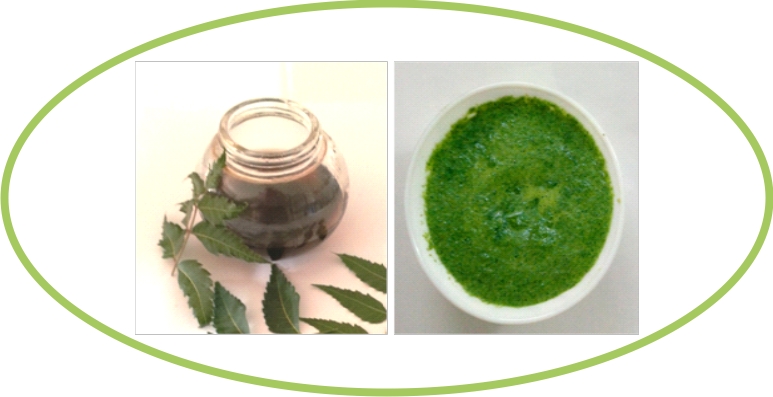
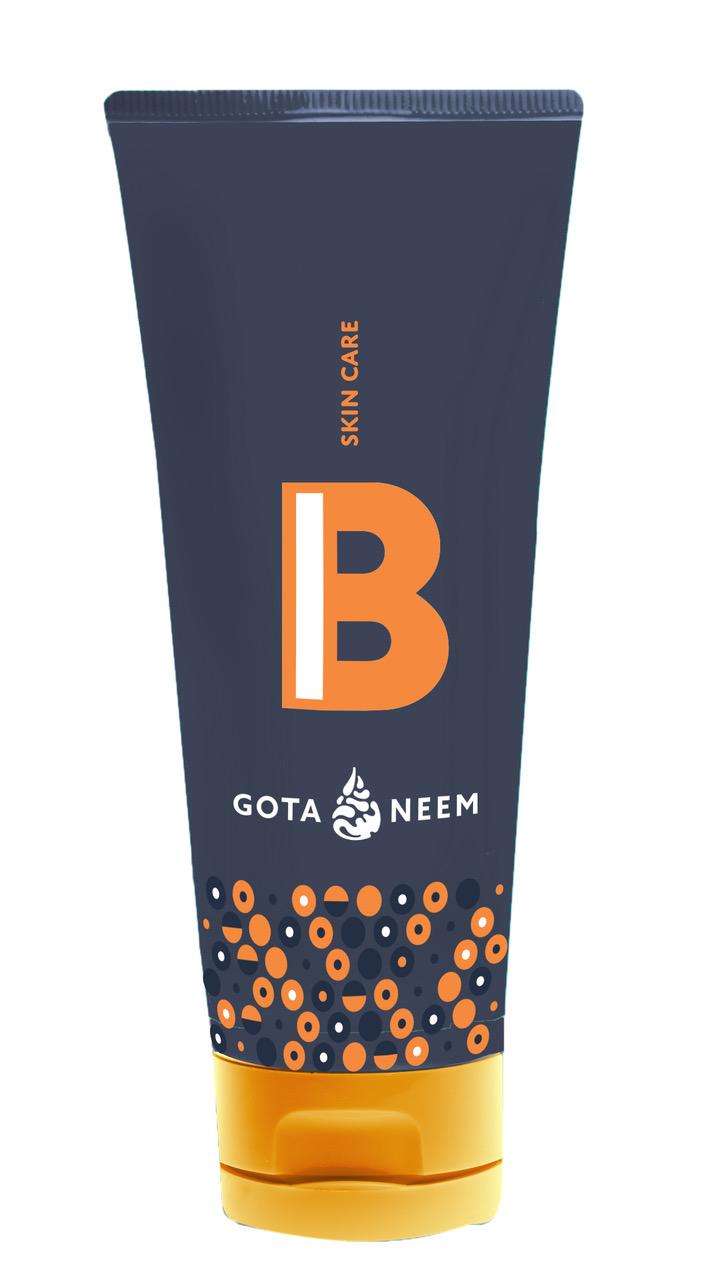
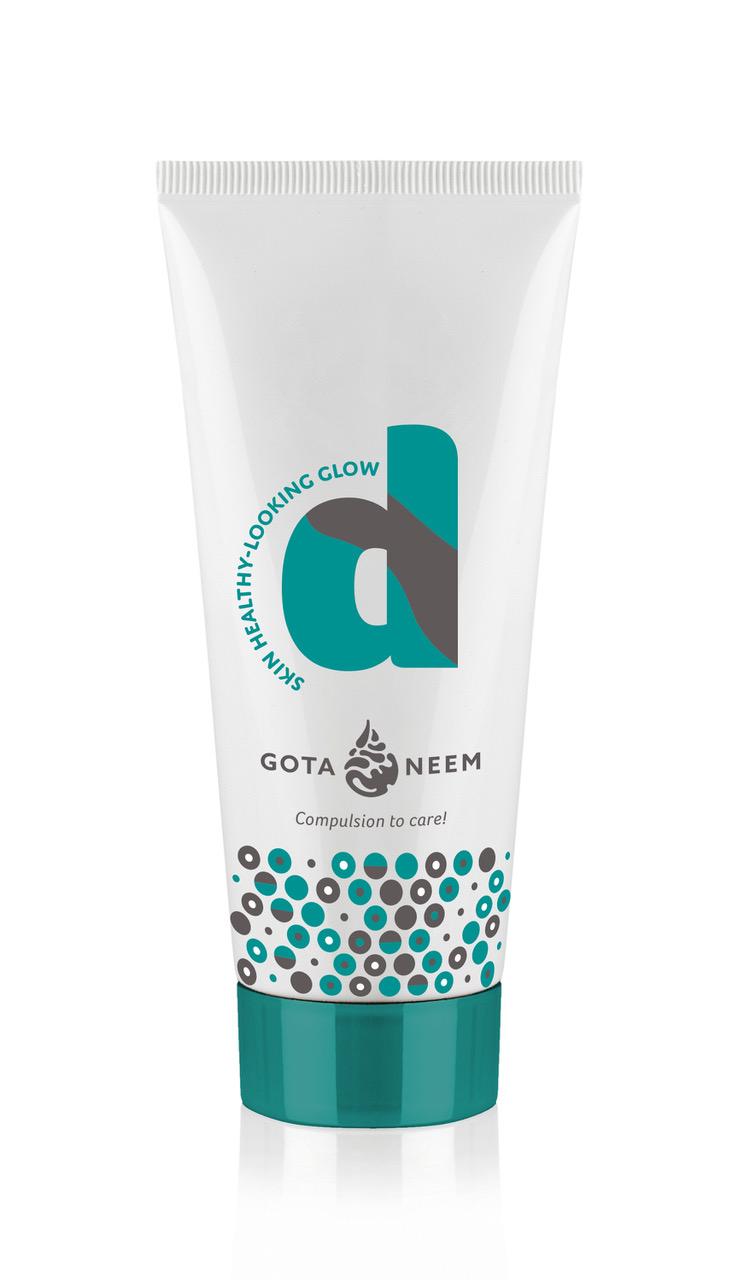
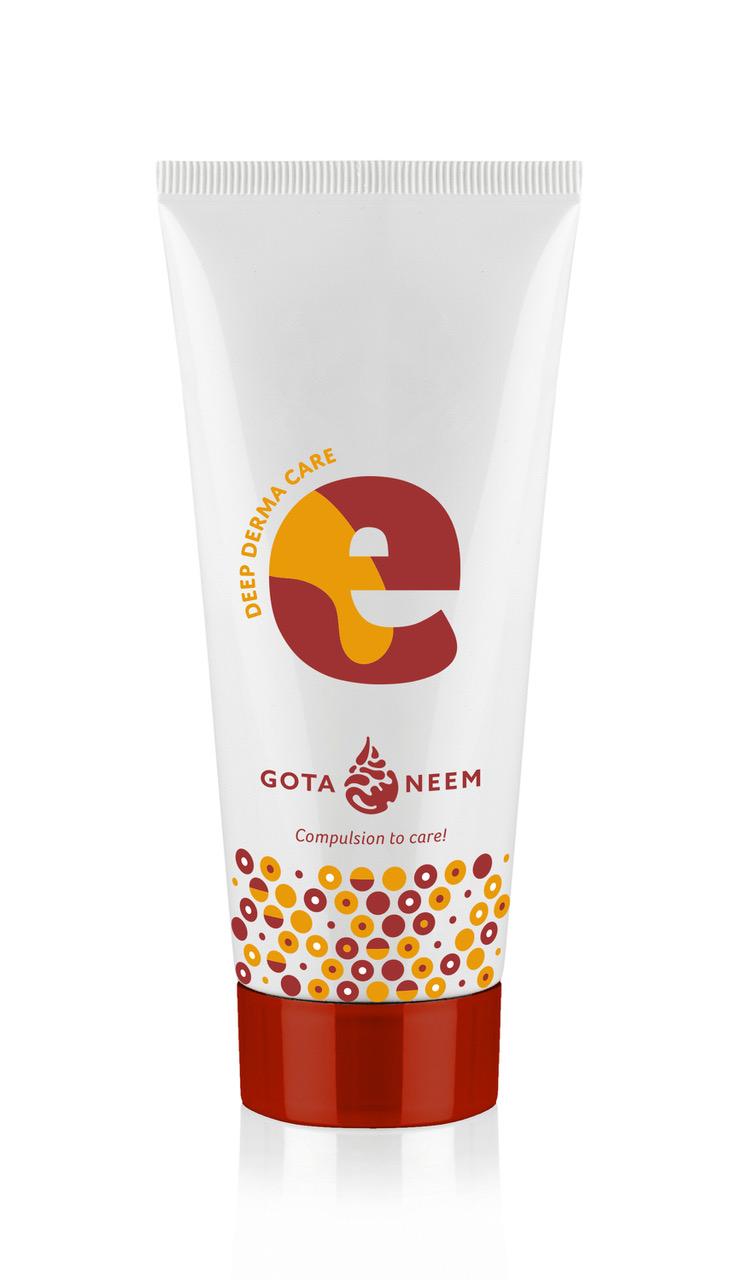
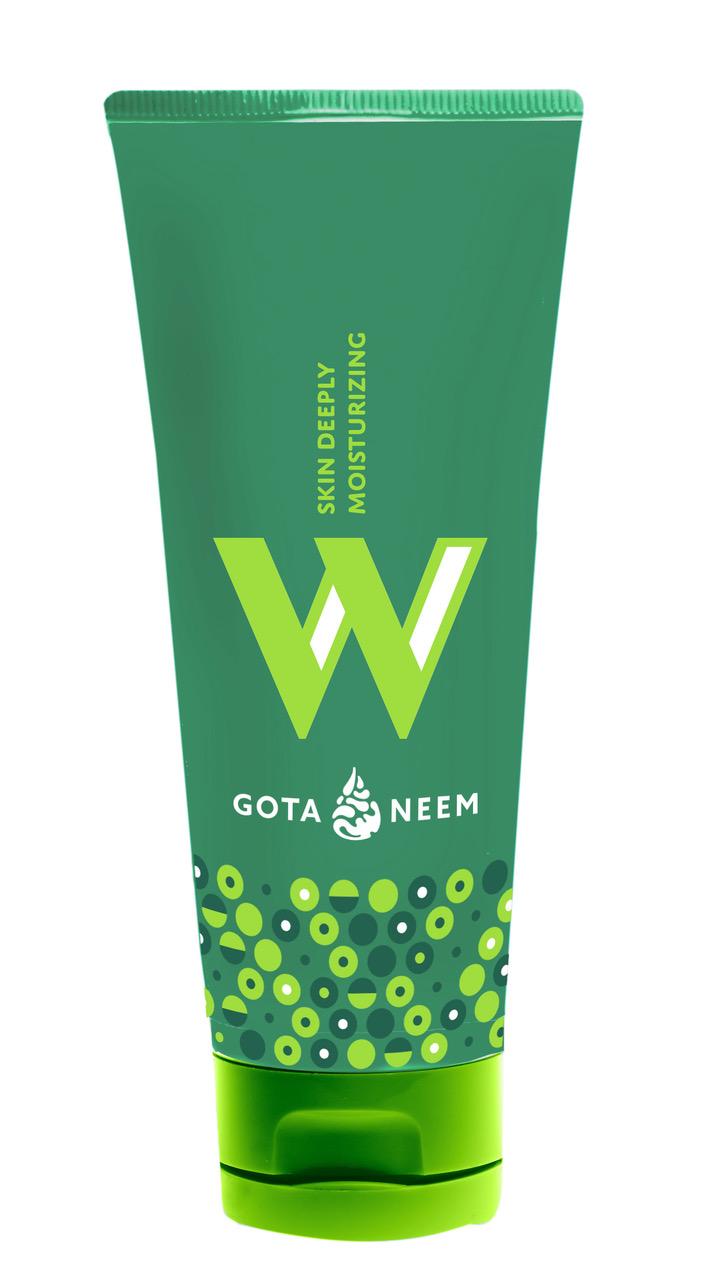
KEEP IT NATURAL – KEEP IT SIMPLE – KEEP IT AFFORDABLE
Let’s open our minds to the wonders of nature and receive the blessings that it freely gives us - such is the joy of the NEEM TREE – used for centuries (at least 4,000 years) for the benefit of mankind. It is a gift from nature to all of us on this planet and is now being embraced by almost every continent in the world.
Neem has incredible healing qualities in terms of human health. It has been proven to have anti-ageing, antibacterial, anti-fungal, antiseptic, antiviral, anti-inflammatory, anti-pyretic, anti-ulcer qualities and also contains analgesic compounds. It is being studied by scientists and pharmaceutical companies all over the world to commercialise these qualities and Neem products are now being sold in every country.
“More than half of modern drugs – ranging from aspirin to the newest, most beneficial drugs for treating breast cancer – are based on ingredients from plants. Medical practitioners on the Indian subcontinent have produced a wealth of plant-based medical knowledge that is unequalled in the world. While modern medicine has largely ignored the Ayurvedic medical tradition, recent reviews of the proven efficacy of ancient natural treatments are finally gaining respect both internationally and in the U.S.
Among the thousands of plants used in Ayurveda, one plant in particular is generating intense scrutiny as traditional uses for the remarkable Neem tree are verified and expanded. Neem is proving to be more than just the ‘village pharmacy’ of ancient India: it is becoming the ‘ultimate herb’ of to-day and to-morrow” (John Conrick, USA, “Neem, the Ultimate Herb”).
The main principle of Ayurveda, the ancient Indian natural medicine, is “First do No Harm”.
“Neem has an almost magical effect on chronic skin conditions that often fail to respond with classical treatments. Neem has been a major ingredient in skin care products of India for over 4,000 years. Its skin healing properties are outlined in some of the earliest Sanskrit writings and its uses in Hindu medicine date back to remote times. Because of its miraculous healing powers, India’s Neem tree is known as the ‘village pharmacy’ . Modern scientists have only just begun to investigate the many unique healing compounds found in this natural medicine factory.” (John Conrick, - Skin Care, The Healing Power of Neem).
It is good for human and animal health and its effects on insects is unparalleled - if this isn’t enough, it provides large volumes of fertiliser containing nitrogen, phosphorus, potassium, calcium, magnesium, sulphur, iron and silica. Being a tree, the fertiliser, insecticides and pesticides are generally recognised as organic.
“Like most plants, neem deploys internal chemical defences to protect itself against leaf-chewing insects. Its chemical weapons are extraordinary, however. In tests over the last decade, entomologists have found that neem materials can affect more than 200 insect species as well as some mites, nematodes, fungi, bacteria, and even a few viruses.” (Neem, A Tree for Solving Global Problems).Due to the people’s desire not to use chemically based products in Health & Beauty, Pet Care and in Agricultural practices, the natural industry is growing at a phenomenal rate worldwide.
NATURAL? CHEMICAL? THERE IS A CHOICE AND MANY PEOPLE ARE EXERCISING THAT CHOICE RIGHT NOW, SO MUCH SO THAT THE LARGE SYNTHETIC CHEMICAL MANUFACTURERS ARE SO CONCERNED THEY WISH TO ELIMINATE NATURAL PRODUCTS ALTOGETHER.
However, the natural industry is not trying to ban chemically produced products, some of which have proven over the years, including DDT and Agent Orange to kill and maim thousands. Who knows how many beneficial species have been wiped out? So why are the chemical companies trying to destroy all natural products and traditional remedies that have been proven over millennia? Is it Control, is it Greed or is it the almighty Dollar? If ever a county on earth should embrace the Neem tree it is Australia. It is almost inconceivable that, with all the proven benefits of Neem, that the governmental approach in Australia is, not only to ignore all of these wonderful attributes, but to suppress them at every turn. It is difficult to understand why this is so. There is room in this world for natural and chemically derived products to work together for the benefit of mankind and there is no point whatsoever in wishing to regulate natural products out of the market altogether.
People power must win the forthcoming battle over CODEX, the organisation of commercial interests which is spreading its tentacles to every continent and every country to restrict the people’s freedom of choice. People generally do not want GM modified foods, plants, animals and surely the people’s voice should be heard. In the current climate of world economics, the people’s voice is not heard and to make matters worse, it is not even sought out by the regulators who wish to control everything we grow, everything we eat, everything we use and virtually our whole lives. “Democracy” is supposed to be the elected leaders acting in the capacity of trustees for the well being of the people and the country and not to deliberately restrict freedom of choice. Just as an example, if the trustees or the elected representatives of the people were concerned with the health and well being of their people, then why, oh why, do they continually allow products to be sold which are clearly causing massive problems for the people, unless, of course they are persuaded by the incredible weight of the dollar.
When you look at a massive industry such as the tobacco industry, it is not too difficult to see just how the blinkers are on. The revenue split on cigarettes is virtually 50/50 to the government and the manufacturer - surely this arrangement must be seen as a joint venture in terms of the money - if not from a legal perspective. Why would you raise taxes on the product when the costs to the community in terms of lives, health and well being, sickness and misery is a cost which far outweighs any reason to have this industry at all. We ask the question, in a supposedly informed society, why is this so? How can this be allowed to happen in the first place - how can it be allowed to continue when the evidence is overwhelming that cigarettes are probably the worst blight inflicted on humans by humans at any time in the evolution of humanity - all for what? MONEY for the chemical companies and REVENUE for the government.
Why it is not that people are becoming disenfranchised with governments that no longer listen nor have the interests of their people in the forefront of their minds. We now have a generation of professional politicians who know absolutely nothing of the workings of commerce or life experience itself, but who wish to have a safe and secure well paid job for life and contribute virtually nothing in terms of common sense and people based decisions. They seem to operate in a vacuum created by themselves and their leaders and make the very big mistake of not realising that people do actually think and do want to have a say in all of the things that affect their lives without being ridiculed and being treated like idiots.
You may say how does this have anything to do with a tree? What we are saying here is, that whilst this is a tree, the same examples apply to many other natural products which governments and regulatory authorities try to suppress so how can it be for any other reason than to benefit certain vested interests.
Recently, the author was invited to another country which is growing something like 4.5 million Neem trees in relatively desertified land to green their environment. The effect of growing the trees already has brought water back to the desert and it is only early days yet. This country had no real idea as to what incredible opportunities these 4.5 million trees could provide the people of their country. On the author’s recommendation to the government, a whole new industry will be established in this country producing not only raw products for the agricultural industry but also a whole range of products for the health and beauty industry and will also improve the quality of their fishing and livestock industries. This new industry will provide employment for thousands of people who are under-employed at the moment and need work to enable them to have a better quality of life. This country is more than happy to embrace natural products and phase out synthetic chemicals which have been found to cause detrimental effects on their people, their fishing and agricultural industries and also to their environment.
How different it is in Australia with, despite the best efforts of the author and his company, www.neemaus.com.au , to provide the same industry for our aboriginal people who also have a competitive advantage in terms of land in the right climatic zone and an under-employed work force, to not even be able to engage the government in a meaningful discussion at all.
If history means anything, and we suggest that it should, then the testing period or the traditional uses of products should be taken into account. Just by way of example, Neem has a history dating back to ancient times of something like 4,000 years and its traditional uses as documented by a publication titled “Miracles of the Neem Tree” provides recipes for the treatment of conditions such as diseases of the head, eye, ear, teeth, nose, throat and lungs, spleen, rectum, skin diseases, leprosy, fevers, specific diseases of men, specific diseases of women and specific diseases of children dating back to Sanskrit times. These recipes are still in use to-day and the author has kept these recipes in mind when developing its range of high quality Health and Beauty & Skin Care and Agricultural products using modern manufacturing practices.
Now, turning to agriculture, Neem has been used for centuries in the storage of grain and as a natural fertiliser which also works against nematodes (the tiny worms which attack the new roots of most plants). Following scientific studies in Africa some 40 years ago, where it was discovered that Locusts (a huge problem for agriculture) would eat everything in sight that was green, but would not eat one leaf of the Neem trees growing there. This was the awakening for the western world regarding Neem. Now, from the crushing of the seeds, an oil is produced which contains, amongst many other actives, Azadirachtin which is the most powerful molecule yet discovered on this planet for its effect against insects.
It is crucial that we understand the real difference between Neem in agriculture and other commercially produced products, i.e. that Neem is insect specific. It works on the hormone structure of the insect which is different to the human hormone structure and, as such, it is toxic to insects and non toxic to humans. It is very easy to see the ramifications of this as if you are spraying crops with an artificial insecticide/pesticide then you can be sure that it is causing detriment to the users and anyone with whom it comes into contact. There are countless reports of people being poisoned in their efforts to try to control insect pests. To make matters even worse, the insects who do not wish to be eliminated begin to develop tolerance to the artificial poisons and become even more difficult to kill requiring more and more powerful toxic cocktails. Even worse than this, the crops that are sprayed are invariably consumed by humans, and it is not too difficult to imagine that virtually all of the foods being consumed to-day are contaminated by the toxic residues of virtually all of the chemical substances used by farmers over many years. All of these substances used for one effect, i.e. to kill the insects but without a vision or any thought for the future or the well being of the people, the soil and the planet itself. We started with a natural planet – the risk is that it is now becoming a chemical cocktail.
There is also no need to interfere with Neem to alter its strength or action by artificial means. Nature has taken over 4,000 years to perfect its recipe and provides the perfect remedy as is – man merely tries to interfere with Nature to try to make money from the process by patenting various elements so as to control and profit from the exercise. Usually, in the process, making it much more expensive and taking it out of the reach of the average person. So, we say, “Keep it Natural, Keep it Simple and Keep it Affordable” so that everyone can have access to its benefits.
So, why Neem? It is very simple; you can control the insect population and infestations in agriculture by the use of Neem without all of the risks mentioned above. In fact, it is almost too simple for our elected representatives to understand or want to understand. You want to be healthy, we want to help you be healthy and we believe that you should be given the freedom to choose what you eat, what you use on your skin or on your favourite pet or indeed on your own garden. Why would anybody want to take this right away from you?
IN REALITY, NEEM IS THE TREE FOR SOLVING GLOBAL PROBLEMS!
Brian Williams
Director
NEEMING AUSTRALIA PTY LTD
ACN 075 199 021
Published in
NEW DAWN MAGAZINE SEPT/OCT 2007
- By Jim Kostrava in January-February 2015
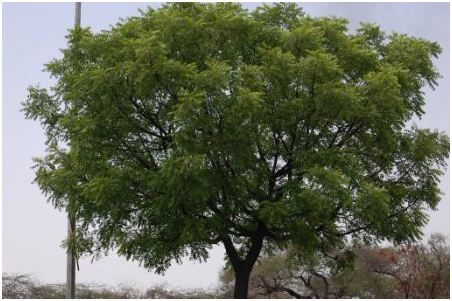
Articles written in Sanskrit are proof that people have been using neem for thousands of years. Neem seeds are pressed and what oozes out is neem oil. But starting in 2005, research scientists that retired from a global chemical company found a way to extract the pure neem extract from neem seeds – capturing 93% of the bioactive ingredients from the Neem trees in Africa.
This pure neem extract is a highly concentrated liquid that is mixed with water [two drops per one ounce of water] and applied to plants as a foliar spray once a week. The plants quickly transform and take on the properties of robust and healthy neem trees from Africa. Over centuries, these trees have evolved and adapted to survive and even thrive in the harshest climates on earth—such as sub-Saharan Africa. Many times these trees are visible whenever you see an African lion safari on TV. You observe the dry desolate landscape and then, in the middle of nowhere, you see a giant, lush, green tree. They are absolutely loaded with bioactive nutrients, and have an active ingredient called Azadirachtin that protects it from harmful pests.
When a locust swarm passes through eating everything in sight, the only plants left are the ones with Azadirachtin. Azadirachtin does not poison the insects like a pesticide; instead, it triggers a stop eating response and the bugs will ultimately starve to death. Harmful pests have learned that they don’t want to be anywhere near these plants, so they avoid them. African villagers also like to gather under these trees because they provide the best shade (they remain green all year) and there are no bugs anywhere near them.
In May 2013, industry author “Grubby cup” wrote an article titled, “Blessed by Neem” that was published in another magazine that gives the best explanation I’ve seen of how and why pure neem extract works the way it does. According to this article, extracts from the neem tree are often used to treat a variety of insect problems. Pests that can be treated with them include: aphids, beetles, cockroaches, flies, fruit flies, fungal infections, grasshoppers, leaf miners, mosquitoes, moths, nematodes, snails, spider mites and thrips. Neem is an EPA-approved pesticide that is not only fairly non-toxic to people and animals, but also to beneficial insects including bees.
Quoting Grubby cup: “One of the most potent components in neem is the liminoids Azadirachtin, which causes some insect larvae to be unable to metamorphosize, and thus prevent them from becoming adults and reproducing.”
He said that Azadirachtin is similar in structure to the hormones used by insects to control development. Once introduced, it blocks the normal functioning of these hormones and prevents the insects from becoming sexually mature. It is also responsible for a fair amount of Neem’s repellent properties. Neem also contains the liminoids salannin and meliantriol (both inhibit feeding) and nimbin, which has antiviral properties.
The extraction process is complicated, but the basic concept is simple: capture the biotechnology of robust, healthy trees (Neem) that have adapted to the harsh climates of sub-Saharan Africa and transfer those properties to plants grown in the United States. Organibliss™ is an all-natural plant growth enhancer [fertilizer] that is primarily pure Neem extract that captures 93% of the bioactive ingredients from the Neem tree. It controls harmful pests such as spider mites, controls plant diseases such as Powdery Mildew and significantly increases the yield (average of 30 – 50%).
James E. Kostrava is CEO & Founder of Organibliss, LLC. He can be reached at 989.839.2342 or email: Jkostrava@organibliss.com and you can visit their website at Organibliss.com.
By Robin Nichols in October 2010
Neem oil is apparently a pretty big deal. It’s used mostly in this country as an organic insecticide and repellent, but it has been used in India for generations as a sort of all-natural pharmaceutical store.
Neem oil is made from the crushed seeds of the neem tree, a coniferous tree native to the Indian subcontinent, and its therapeutic properties are well known there. From the (relatively small) Wikipedia entry on the subject:
In India and Bangladesh it is used for preparing cosmetics (soap, hair products, body hygiene creams, hand creams) and in traditional Indian medicine, in the treatment of a wide range of afflictions. The most frequently reported indications in traditional writings are skin diseases, inflammations and fevers, and more recently rheumatic disorders, insect repellent and insecticide effects.
Traditional uses of neem include the treatment of acne, fever, leprosy, malaria, ophthalmic and tuberculosis. Various folk remedies for neem include use as an anthelmintic, antifeedant, antiseptic, diuretic, emmenagogue, contraceptive, febrifuge, parasiticide, pediculocide and insecticide. It has been used in traditional medicine for the treatment of tetanus, urticaria, eczema, scrofula and erysipelas. Traditional routes of administration of neem extracts included oral and topical use.
Neem oil has an extensive history of human use in India and surrounding regions for a variety of therapeutic purposes. Formulations made of neem oil also find wide usage as a bio-pesticide for organic farming, as it repels a wide variety of pests including the mealy bug, beet armyworm, aphids, the cabbage worm, thrips, whiteflies, mites, fungus gnats, beetles, moth larvae, mushroom flies, leaf miners, caterpillars, locust, nematodes and the Japanese beetle. Neem oil is not known to be harmful to mammals, birds, earthworms or some beneficial insects such as butterflies, honeybees and ladybugs. It can be used as a household pesticide for ant, bedbug, cockroach, housefly, sand fly, snail, termite and mosquitoes both as repellent and larvicidal. Neem oil also controls black spot, powdery mildew, anthracnose and rust (Fungus).
A co-worker has some anecdotal evidence that it works great as a basement treatment to keep crickets and all the other creepy crawlers that cab inhabit our subterranean habitats. I suppose theoretically you could even use it for a lawn treatment to keep some of the less desirable pests away.
But wait! No need to unleash warfare on the beneficial inhabitants of our yards and gardens just because we have a few crickets in the basement, right? Well, that’s why neem is so amazing. It has virtually no effect on beneficial insects like bees and butterflies (as long as they are not sprayed directly). And since its all-natural it doesn’t harm plants either, and in fact works from the inside out. Instead or in addition to topical applications you can add neem to your watering regimen and it will protect your plants at a cellular level. Of course it takes a little longer than real chemicals, but it leaves everything 100% non-toxic.
So how does it work? There are dozens of active compounds in neem very similar to the natural hormones found in insects. The presence of neem blocks the functioning of the real hormones, and predictably, chaos ensues for the insect. Insects “forget” to eat, to mate, or they stop laying eggs. Some forget that they can fly. If eggs are produced they don’t hatch, or the larvae don’t molt. Obviously this is going to have a detrimental effect on the population, and after a small period of time it will collapse. It may take as much as a couple weeks, but it will happen.
The reason it doesn’t affect the good insects is because it must be ingested to do damage, and good insects (obviously) don’t eat your plants. As mentioned above though, it is probably ill-advised to give them a bath in the stuff, so save your spraying for times when beneficial insects aren’t active like early morning or late afternoon.
A neem garden spray of 0.5% to 1% is a good general purpose solution. Depending on the purpose you may want to increase that to up to 2%. Use your own observations and common sense. Keep in mind that neem oil insecticide does not kill insects instantly. Wait for at least a week to judge the effects.
For 1 litter of a 0.5 % dilution of neem plant spray you need: • 5 ml neem oil
• 1-2 ml insecticidal soap or other detergent (helps oil mix with water)
• 1 litre warm water
Apply that once every couple weeks for a preventative effort or more for stopping an infestation and you should see results in a week or two.
If you haven’t considered, or even heard, of neem oil and have been about wondering ways to combat insects naturally then give it a try. Centuries of folk medicine can’t be wrong.